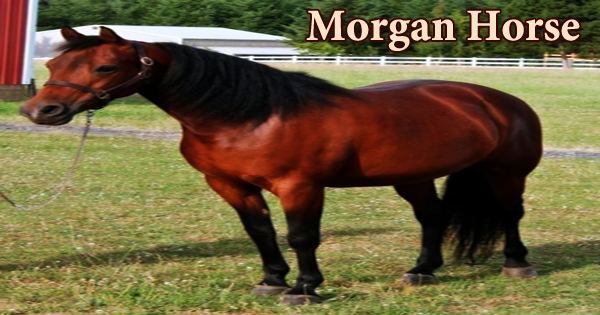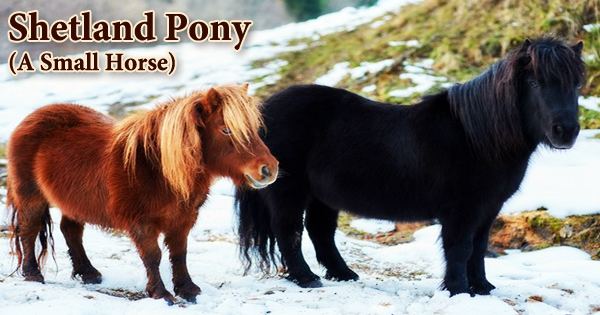The Morgan horse was one of the first horse breeds to be produced in America. The Morgan is a versatile tool that can be used in almost any situation. It is also relatively simple to maintain. Morgan horses can be handled by equestrians of all ages, including girls. The Morgan’s popularity waned, and breeding was controlled by the government for a time. The breed was founded by a horse known as Justin Morgan, after his owner. Though the horse died in 1821, his individual stamp still persists. He stood approximately 14 hands (56 inches, or 142 cm) high and was a compact, active, and a virile horse whose pedigree was probably a blend of Thoroughbred and Arabian, with some other elements as well. Morgans also inspired the American Quarter Horse, Tennessee Walking Horse, and Standardbred, among other major American breeds. They were exported to other countries during the 19th and 20th centuries, including England, where a Morgan stallion inspired the breeding of the Hackney horse. The first breed registry was founded in 1909, and many organizations have sprung up since then in the United States, Europe, and Oceania. In 2005, it was reported that there were over 175,000 Morgan horses in the world. Modern Morgan Horses are more polished, but they are still powerful and spirited horses. They are known for having incredibly friendly personalities as well as a cooperative and eager nature. They are normally high-stepping horses with their heads and tails carried higher than most horses, and a few Morgans are gaited. The American Morgan Horse Association is the registry for one of the most common horse breeds in the United States. The Morgan is a lightweight, refined breed that is typically bay, black, or chestnut in color, though they are available in a variety of colors, including some pinto variants. The breed is noted for its versatility, as it is used in both English and Western disciplines. The Morgan evolved into the perfect all-purpose horse, equally at ease in harness, under saddle, on the racetrack, or in the fields. Vermont’s state animal, Massachusetts’ state horse, and Rhode Island’s state mammal are all Morgans. Marguerite Henry and Ellen Feld, two well-known children’s writers, have depicted the breed in their works; “Henry’s Justin Morgan Had a Horse” was later adapted into a Disney film.

Modern Morgans stand between 14.1 and 15.2 hands tall (57 and 61 inches, or 145 to 155 cm) and weigh between 900 and 1,100 pounds (400 to 500 kg). Smooth lines, tiny ears, expressive eyes, and a beautifully crested neck make them trendy and appealing. They are all-purpose horses, but they seem to lean more toward the riding-horse category than in the past. The tail is borne gracefully and straight and is attached high. Morgans tend to be powerful, strong horses, and the breed is well-known for being simple to care for. The Morgan Horse is a light horse breed. Warmblood horses are also known as light horses. Light horse breeds are those that weigh less than 1,500 pounds. They are commonly used as trail horses and pleasure riding horses. Many are used on the racetrack, in the show ring, and for ranch work due to their agility and speed. Colonel Battell of Middlebury, Vermont, first published the American Morgan Horse Register in 1894, tracing Justin Morgan’s descendants and encouraging Morgan breeding. In 1909, the Morgan Horse Club, which was later replaced by the American Morgan Horse Association, took over the Register. The Morgan horse was bred for its physical prowess, versatility, and cooperative nature, as seen in the stallion Figure. The Morgan has been an all-purpose horse with a long list of abilities and applications since its inception. The Morgan was respected as much for plowing the fields as it was for pulling the family buggy until industrialization changed the landscape of agriculture and transportation. Among the Morgan breed, one genetic disorder has been reported. This is Type 1 polysaccharide storage myopathy, an autosomal dominant muscle disorder caused by a missense mutation in the GYS1 gene that affects primarily stock and draft horse breeds. Morgans are one of more than a dozen breeds found to carry the allele for the disease, though it tends to be uncommon in Morgans relative to stock and draft breeds. In one sample, less than 1% of randomly tested Morgans had the allele for this disorder, which was one of the lowest percentages among breeds studied. Morgans are known for their highly friendly personalities and willingness to please. They have a higher move and bear their heads and tails than most horses. A few Morgans are gaited, meaning they have gaits other than the standard four: walk, trot, canter, and gallop. Morgan horses come in a variety of equine colors. Dark, solid colors, such as bay, black, and chestnut, are popular. However, some breeders specialize in producing Morgans in unusual colors such as palomino, pinto, gray, dun, roan, and others. This feature of Morgan’s appearance has no official breed standard. They’re known for being fast keepers, which means they can maintain a healthy weight with less feed than most horses. To prevent them from being overweight, they can need to be fed just a small amount of sweet feed. During the American Civil War, both sides used Morgans as cavalry mounts. The Brunk, Government, Lippitt, and Western Working “families” are the four major bloodline classes within the Morgan breed today. There are also subfamilies that are smaller. Morgans were used as racehorses and as cavalry mounts during the Civil War. They were also hitched to wagons or ridden by settlers heading west in the United States. Morgan horses compete in nearly every equestrian sport today. Morgan horse shows also feature sidesaddle competitions, trotting races under saddle, driving classes, dressage, jumping, and other events that highlight the breed’s exceptional versatility.
















